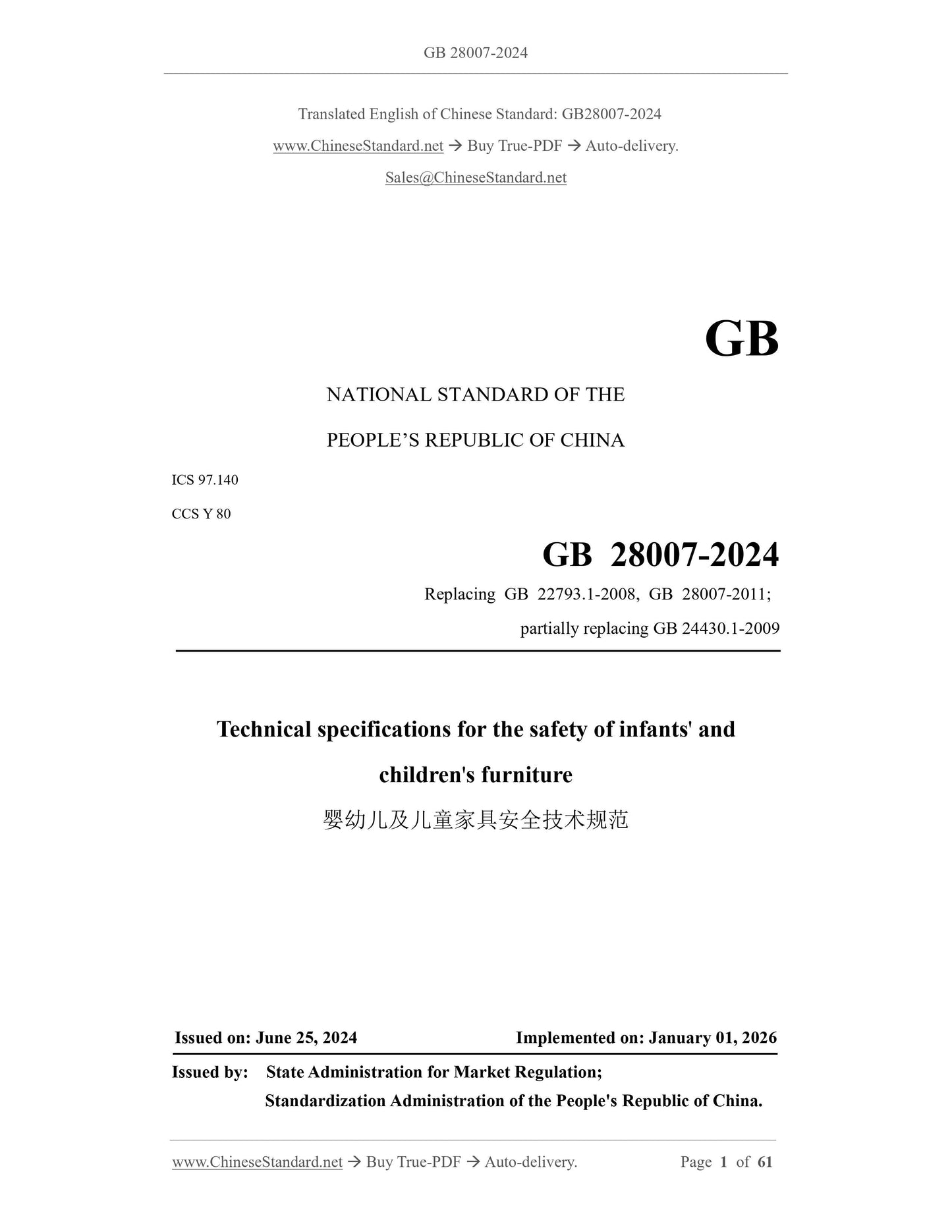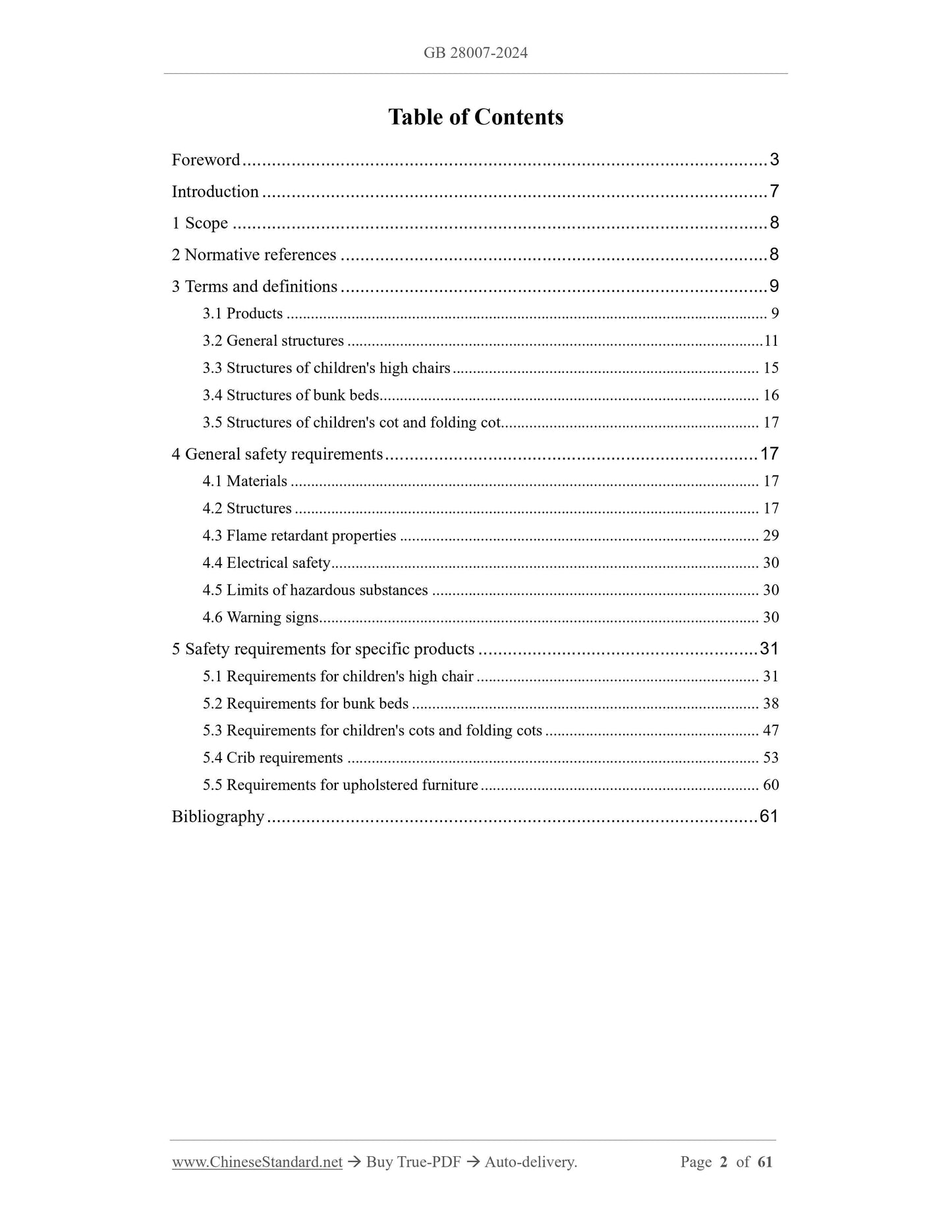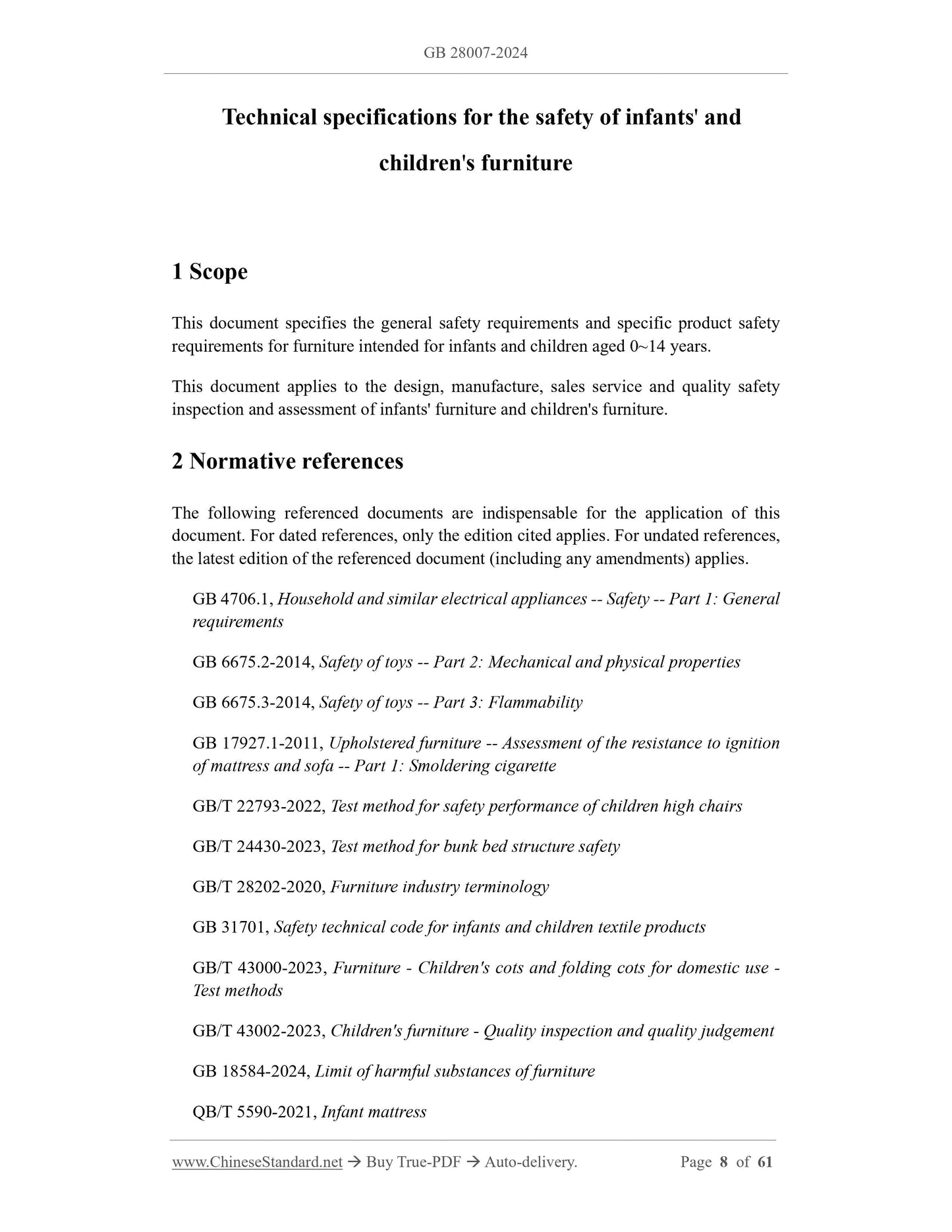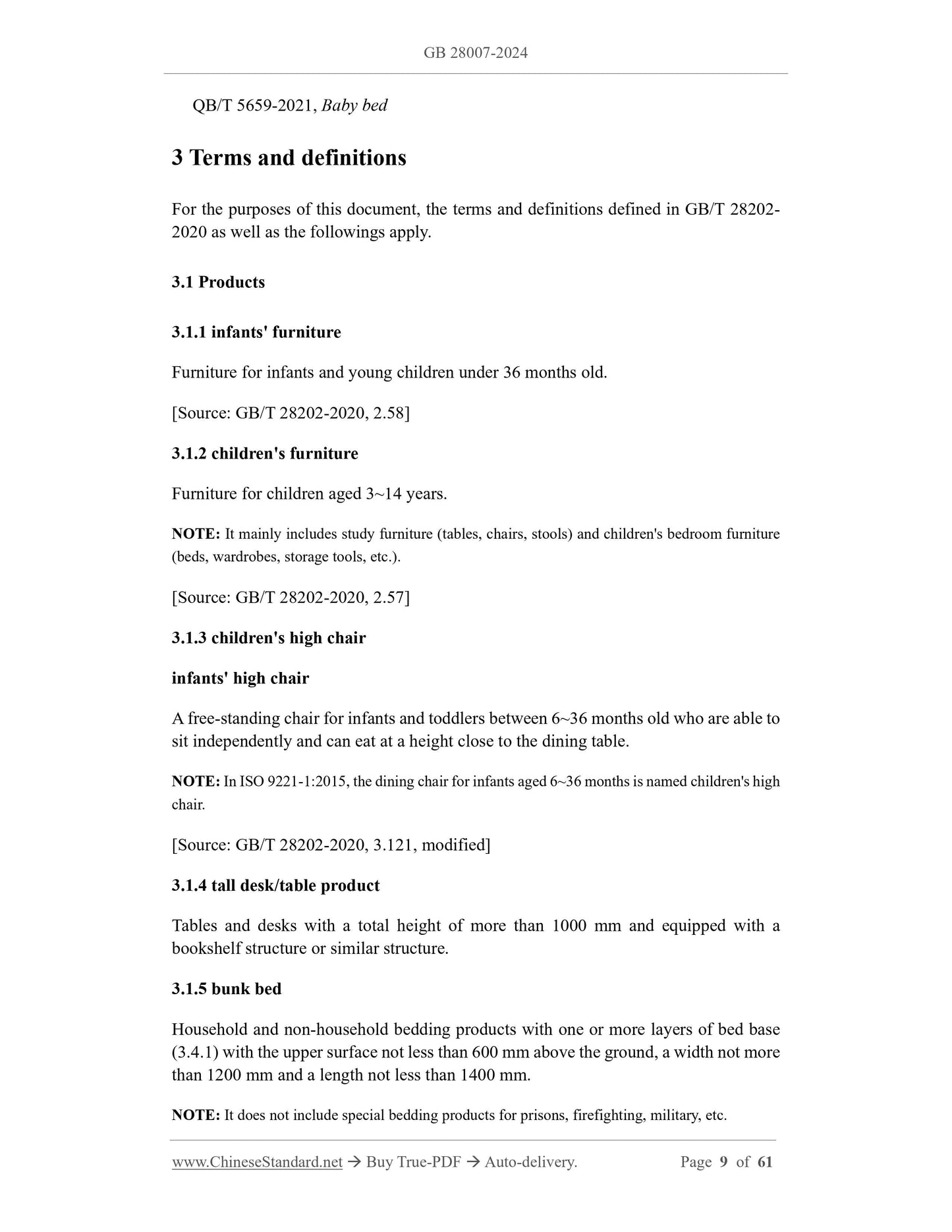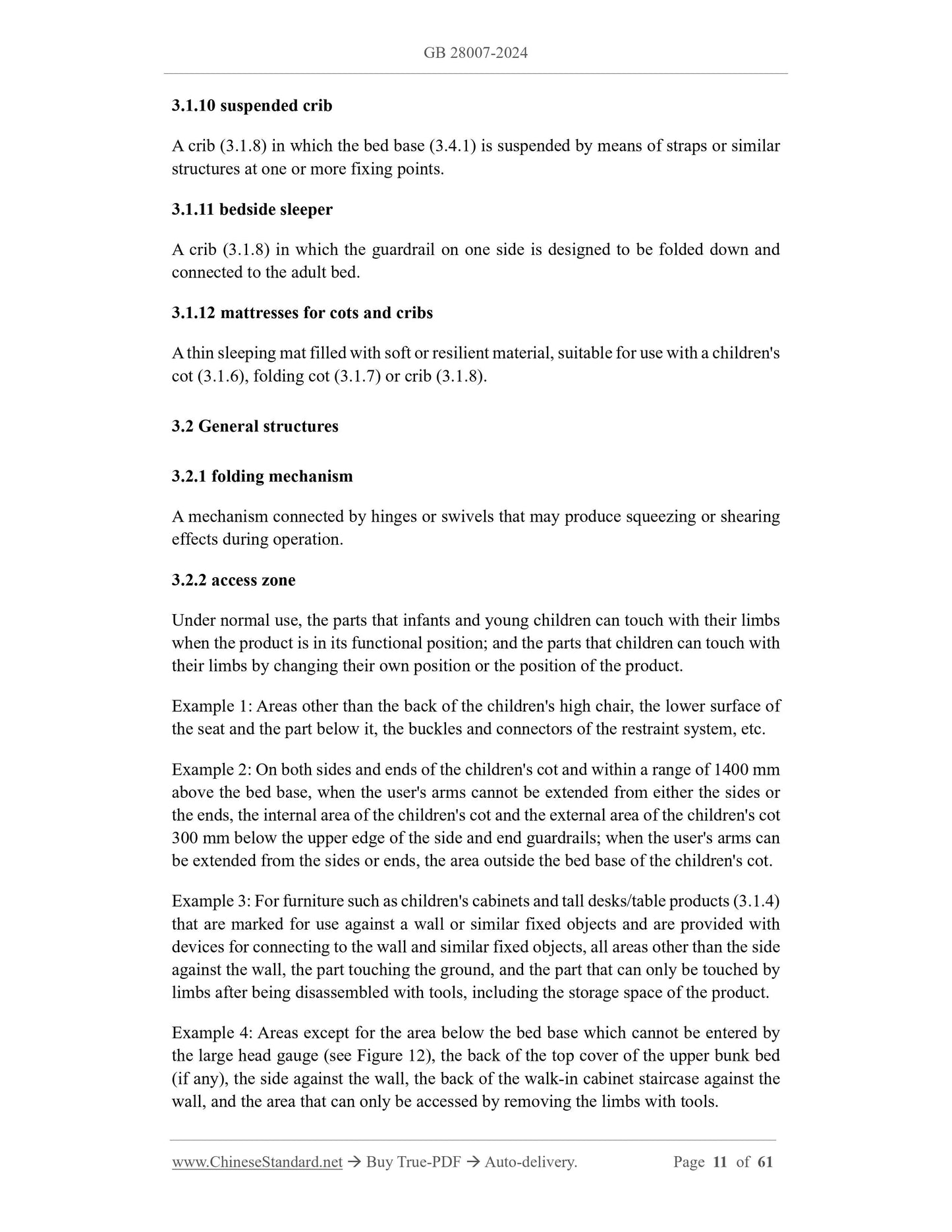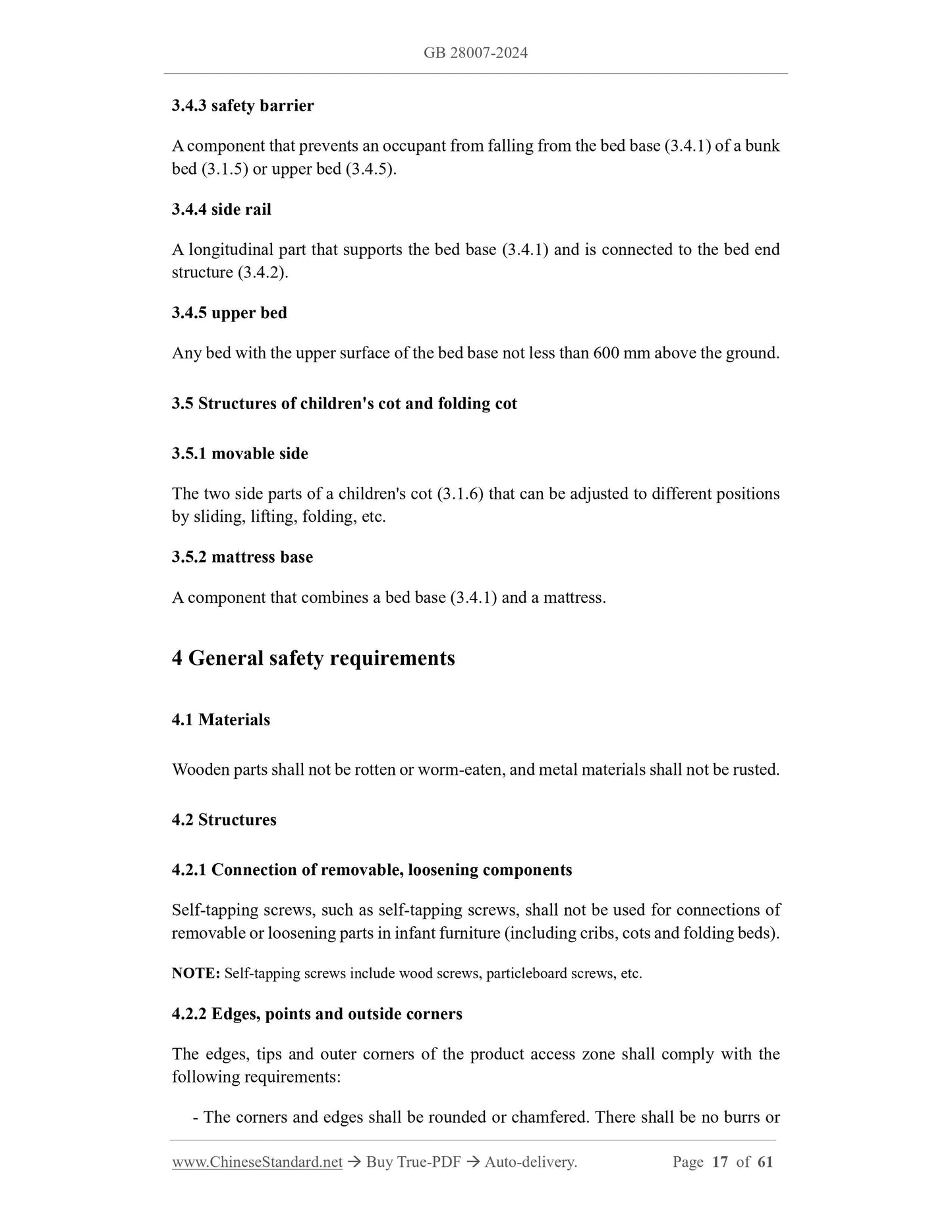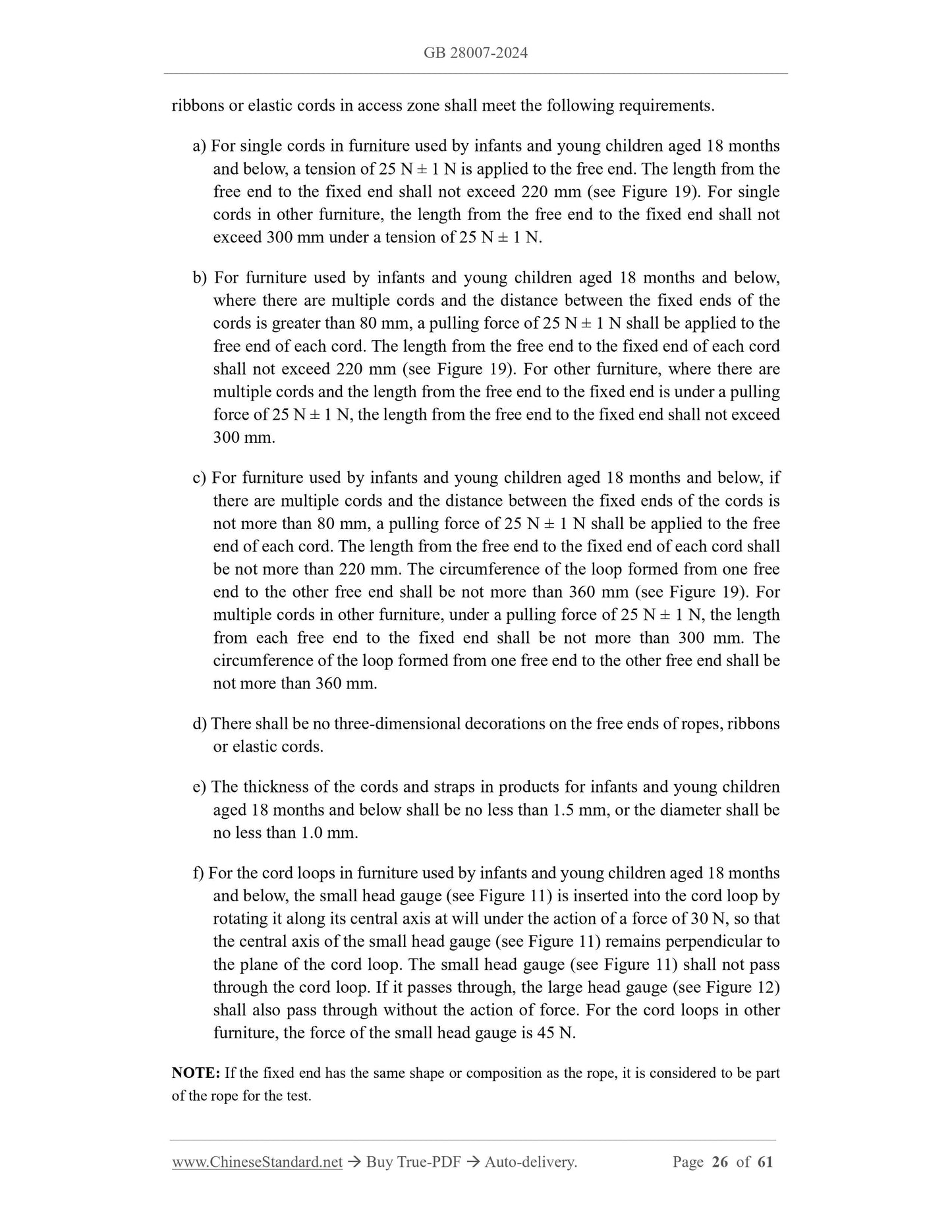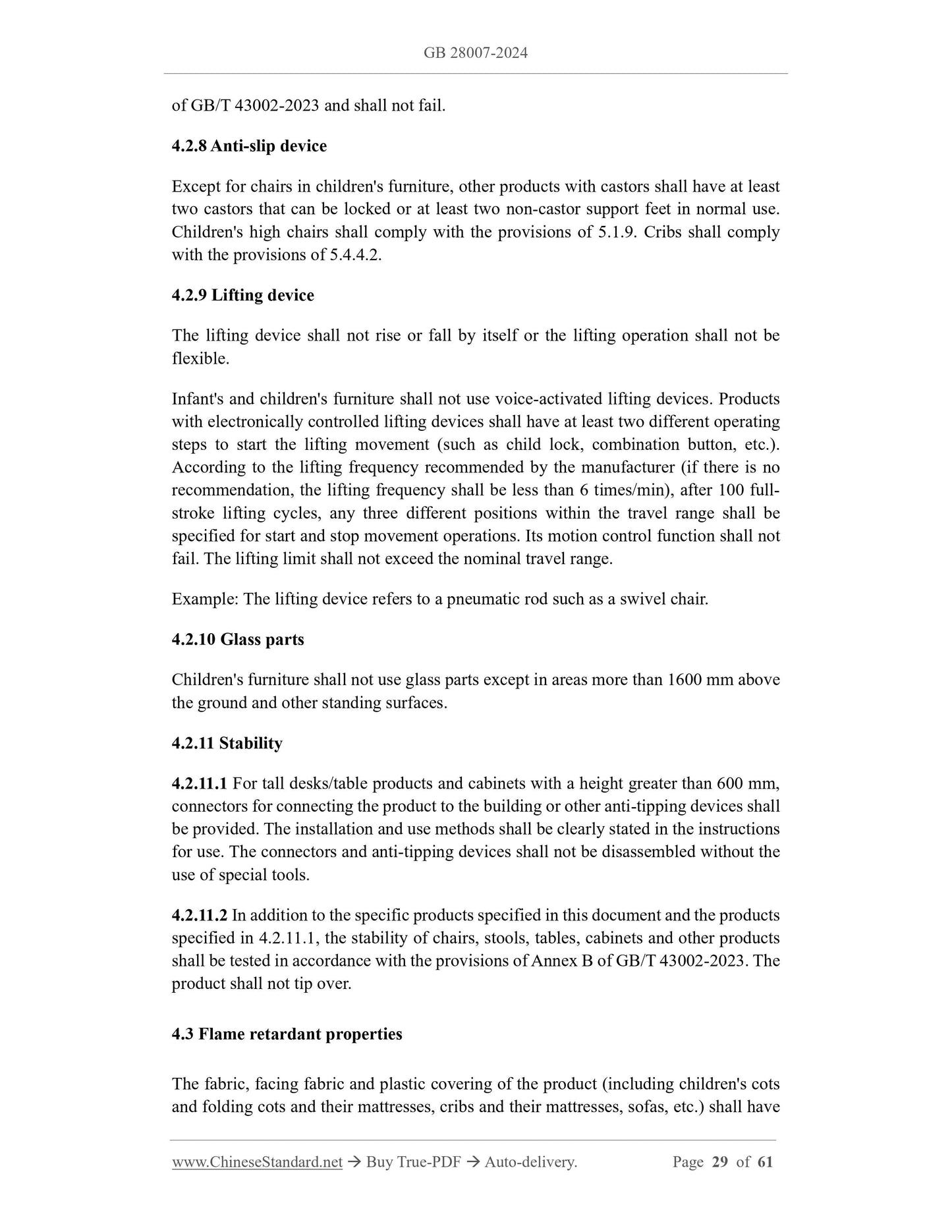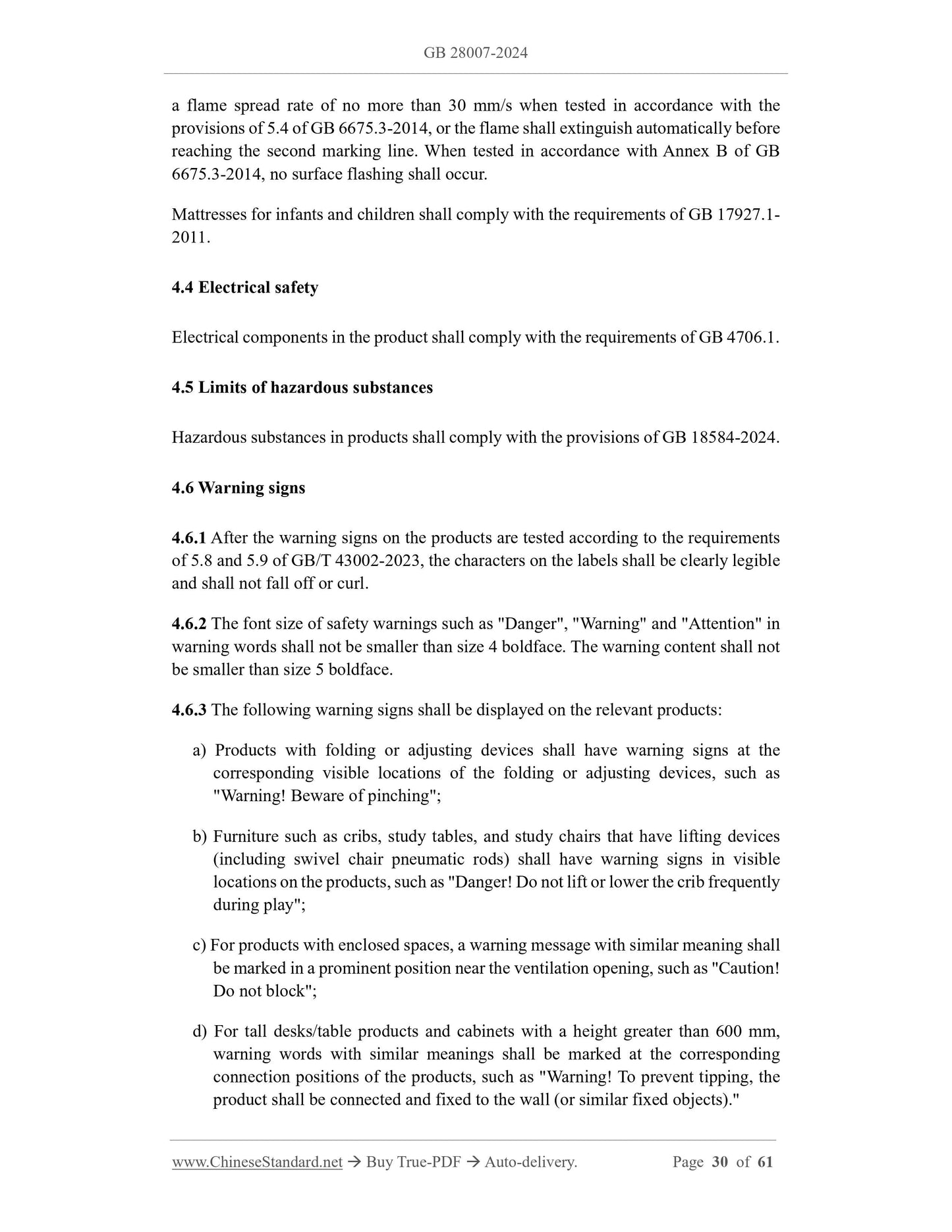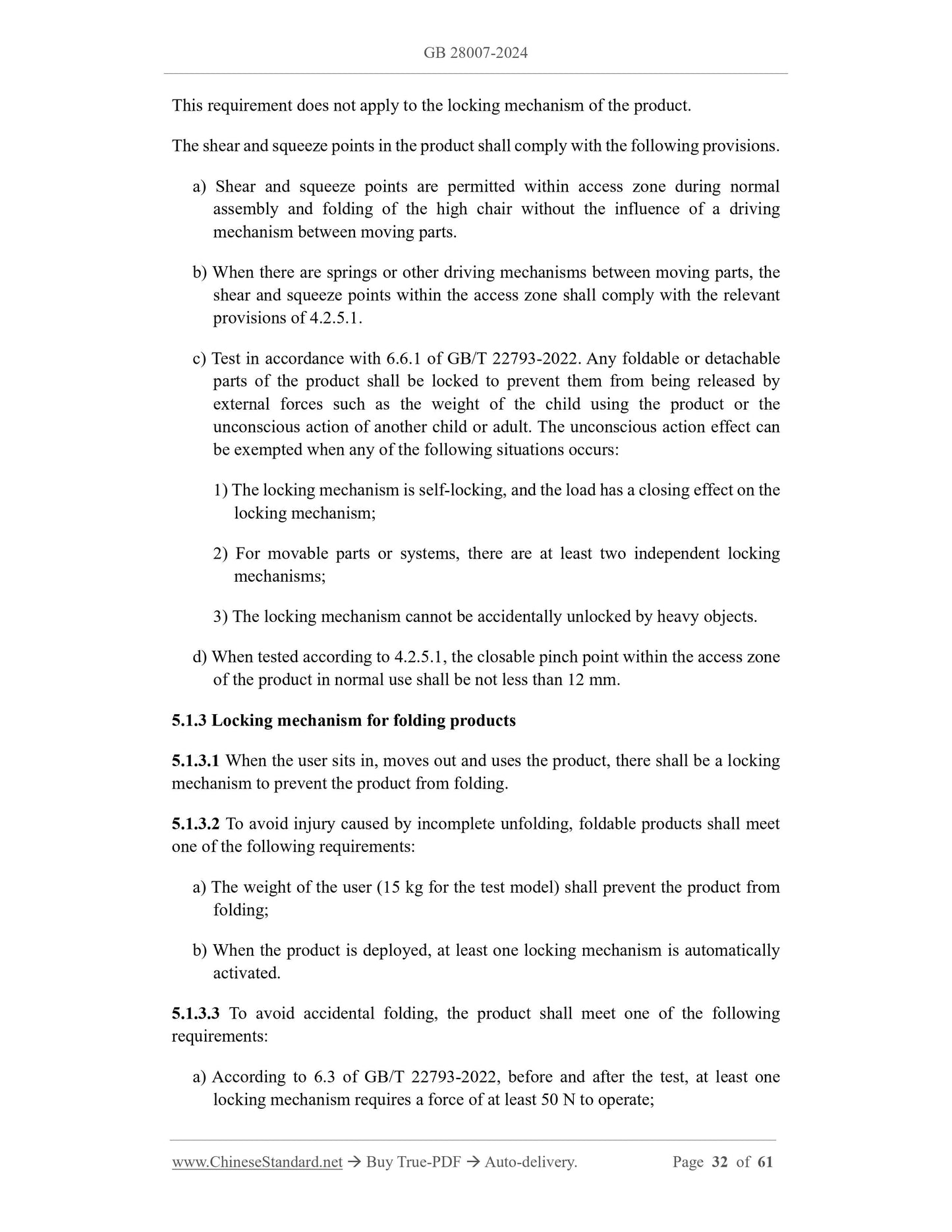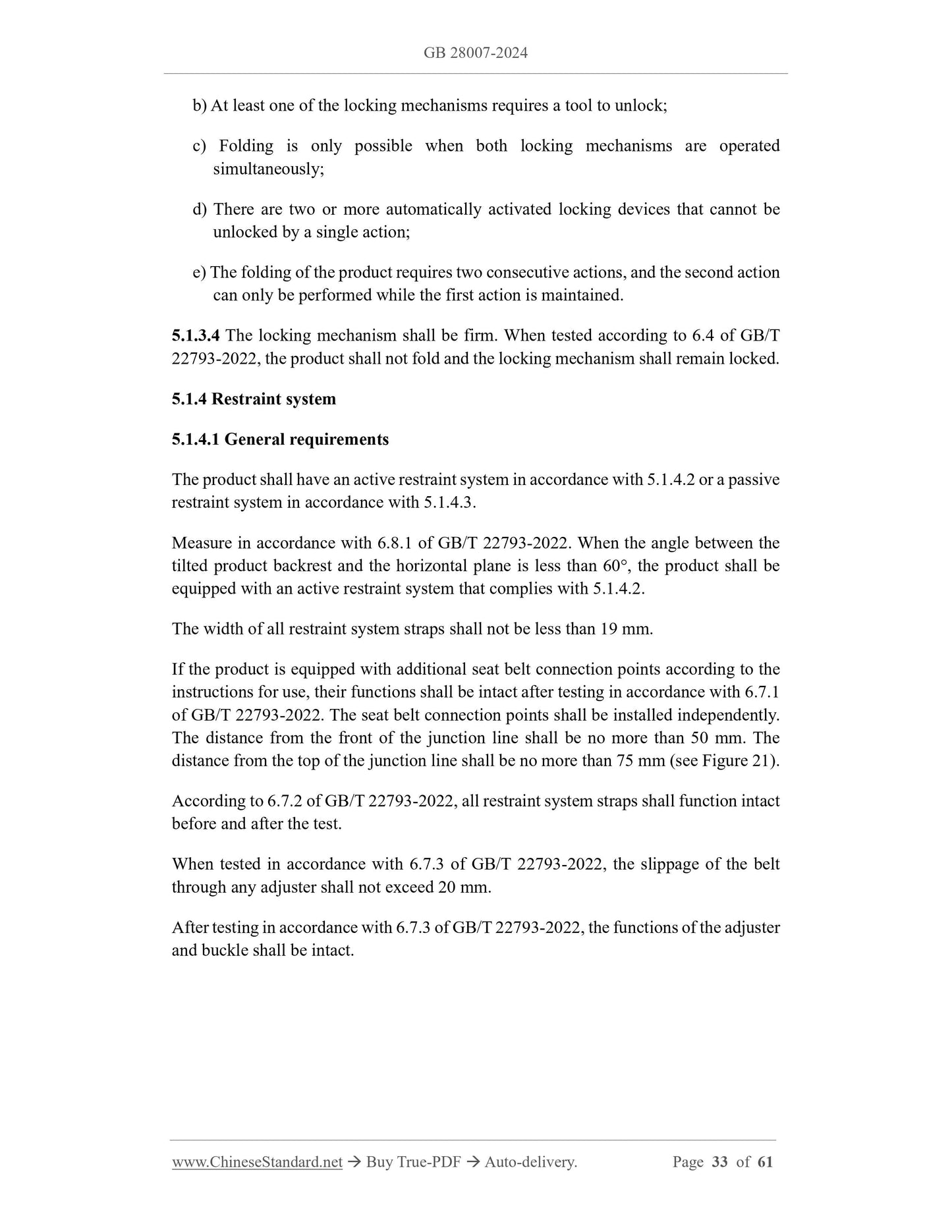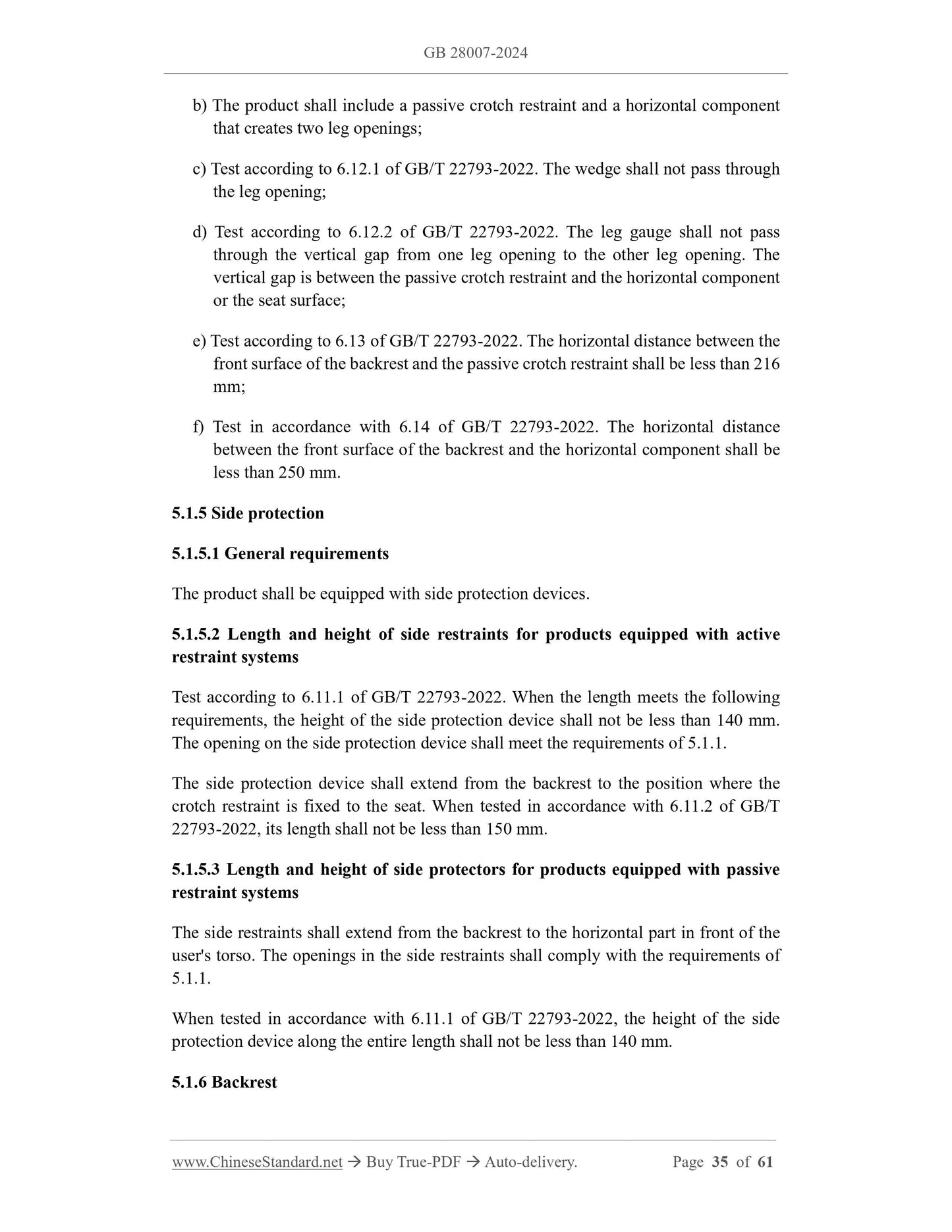1
/
of
12
www.ChineseStandard.us -- Field Test Asia Pte. Ltd.
GB 28007-2024 English PDF
GB 28007-2024 English PDF
Regular price
$640.00
Regular price
Sale price
$640.00
Unit price
/
per
Shipping calculated at checkout.
Couldn't load pickup availability
GB 28007-2024: Technical specifications for the safety of infants and children furniture
Delivery: 9 seconds. Download (and Email) true-PDF + Invoice.Get Quotation: Click GB 28007-2024 (Self-service in 1-minute)
Newer / historical versions: GB 28007-2024
Preview True-PDF
Scope
This document specifies the general safety requirements and specific product safetyrequirements for furniture intended for infants and children aged 0~14 years.
This document applies to the design, manufacture, sales service and quality safety
inspection and assessment of infants' furniture and children's furniture.
Basic Data
| Standard ID | GB 28007-2024 (GB28007-2024) |
| Description (Translated English) | Technical specifications for the safety of infants and children furniture |
| Sector / Industry | National Standard |
| Classification of Chinese Standard | Y80 |
| Classification of International Standard | 97.140 |
| Word Count Estimation | 46,470 |
| Date of Issue | 2024-06-25 |
| Date of Implementation | 2026-01-01 |
| Issuing agency(ies) | State Administration for Market Regulation, China National Standardization Administration |
Share
